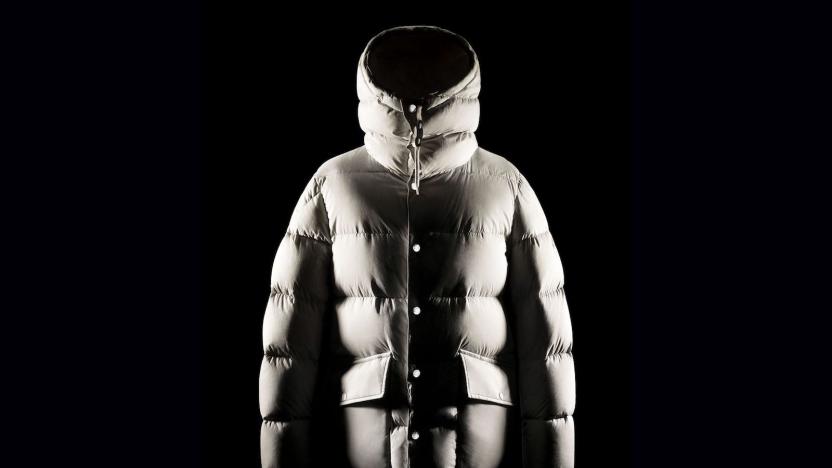radiofrequencyidentification
Latest

How RFID tags became trendy
As far as wireless technologies go, radio-frequency identification (RFID) is one of the oldest. Patented in 1983 by the late British inventor Charles Walton, RFID made it possible for new, cutting-edge tech such as near-field communication (NFC) to exist. As with NFC, RFID chips are used to store information digitally, which can then be shared between objects through electromagnetic fields and radio waves. It may not be sexy, but companies see real potential in the technology, no matter how old. It's no surprise, then, that over the past few years RFIDs have become ubiquitous in a wide range of industries, including travel, sports and one you wouldn't expect: fashion.

Arduino, iPod and RFID make beautiful, accessible music together (video)
There isn't actually much new about this awesome DIY project, but it's the way it brings the various parts together that has us impressed. Designed by Instructables user XenonJohn, with help from software developer David Findlay, the Magic Music Table RFID was designed to let a child with a disability select albums to play back from an iPod touch playlist. The iPod is connected to an Arduino, which tells the device to start playing a particular track based on a selection made with RFID cards. The whole setup is built into a coffee table and the RFID tags are sandwiched inside clear plastic blocks with the album art. You can see it in action in the video after the break and, if you've got the patience and skill, you can build your own using the directions at the source link.

RFID-enabled vending machine ditches coinage, gets Mario Bros. tone (video)
A Twitter-enabled kitty door it is not, but this RFID-equipped soda machine is by far one of the most practical DIY projects we've seen in sometime. A Canadian tinkerer picked up this pop pusher a few years back, and has been using it to sling drinks in his building ever since. Unfortunately, finding the right change to feed the machine proved an issue for his neighbors, so he did what any logical hacker would do, and built in a contactless payment system. Using an Arduino, an Ethernet shield, an LCD screen, and an RFID reader, he created a system that allows customers to swipe a card and easily add funds from an online account. Best of all, every time you press that little blue button you get a Mario Bros. sample. Big ups, PopCARD. Video after the break.

Item-level RFIDs get support from big retailers, track your every purchase
Toilets, cows, and Germans have all been tagged by RFIDs, but according to a new study, it's footwear and fashion that top the demand for radio-enabled tracking. In a report released yesterday, ABI Research said more than three-quarters of a billion RFID tags will be used in global apparel markets in 2011, with retailers like Walmart, Macy's, and JC Penney leading the way. Item-level tracking isn't new -- in fact we saw something similar in 2006 -- but with the likes of Walmart on board, the system is expected to grow as much as 60 percent in the next three years. The study suggests inventory and security as driving factors in the adoption of RFIDs, but we've got our suspicions. And anyway, we don't want anyone to know how much we spent on that Material Girl leopard print shrug -- not even a machine.

Apple job posts point to built-in NFC capabilities for iPad / iPhone
Ladies and gentlemen of the, ahem, jury, we intend to show -- through rumors and circumstantial evidence -- that Apple might very well be building Nexus S-like NFC capabilities into next-generation iPhones and iPads. We present for your consideration exhibits A, B, and C: three Apple job posts, seeking two managers of global payment platforms and one test engineer for iPhone hardware. According to the original post, the right engineer possesses a background in both ICT (information and communication technology) and RFID (radio frequency identification), which forms the basis for NFC. Suspiciously, Apple removed the "ID" in "RFID" sometime in the past 24 hours. Still not convinced of Apple's NFC involvement? Consider this: Apple's manager of global payment platforms is tasked with contributing "to the analysis and development of new payment types and processes." Okay, so there's not a smoking gun in sight, but a little innocent conjecture never hurt anybody.

TI launches second-generation RFID silicon
With corporate giants like Wal-Mart embracing RFID in every potential nook and cranny of their supply chain, it's becoming quite the profitable little cottage industry, and Texas Instruments apparently wants a bigger piece of the pie. With the announcement of its EPC second-generation UHF-based RFID silicon, the company has blazed its own trail by insourcing the fabrication of its tags and marketing the new chips to retailers who rely on fast-paced data transmissions in their manufacturing and distribution channels. The new Gen 2 silicon obviously has complex underpinnings responsible for the changes; as TI states, it's developed "on the most advanced analog process node at 130 nanometer and with a built-in Schottky diode [saywha?] for more efficient conversion of RF signal energy." While that may not mean much to you, the skinny is that these new tags have increased chip-to-reader sensitivity, so more packages can be read at a faster pace from a greater distance than before. What this provides end-users with is greater flexibility, which has been a issue with passive RFID thus far -- new wafers and chips can be placed in more varied locations on pallets, boxes, and even flexible packaging such as bags, without fear of slipping under the radar (literally). And, as always, while retailers may dig the the increased read-range, we're sure it won't be long before the privacy advocates introduce a high-proximity RFID scrambler just in case these tags make the jump from packaging to people.



